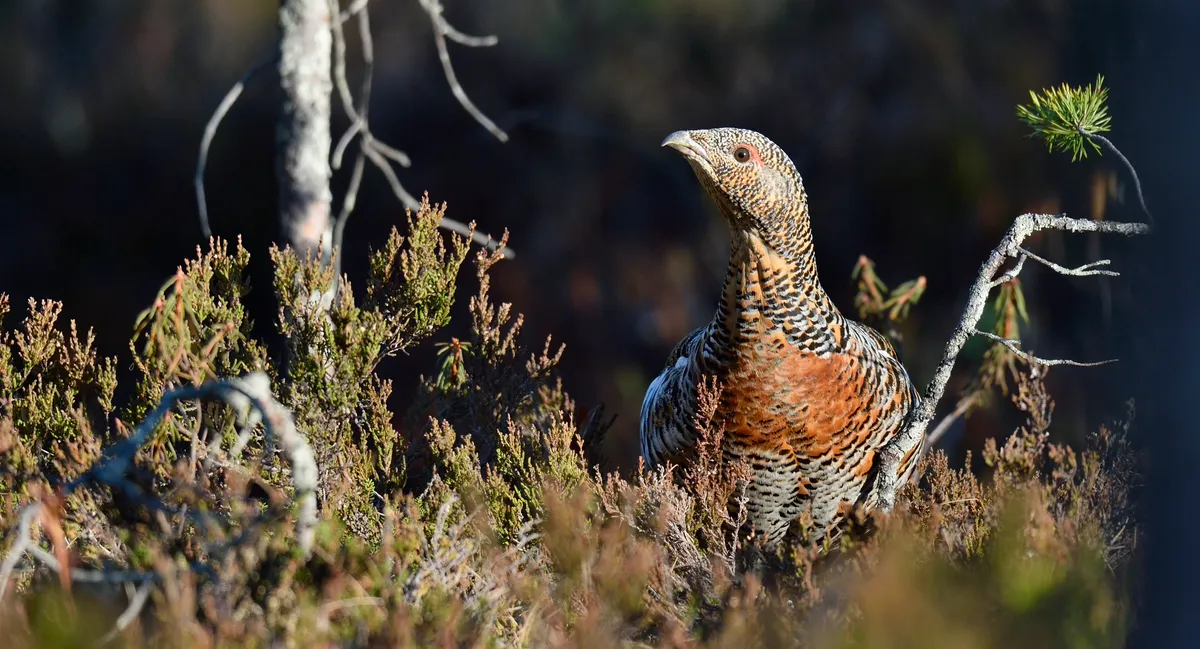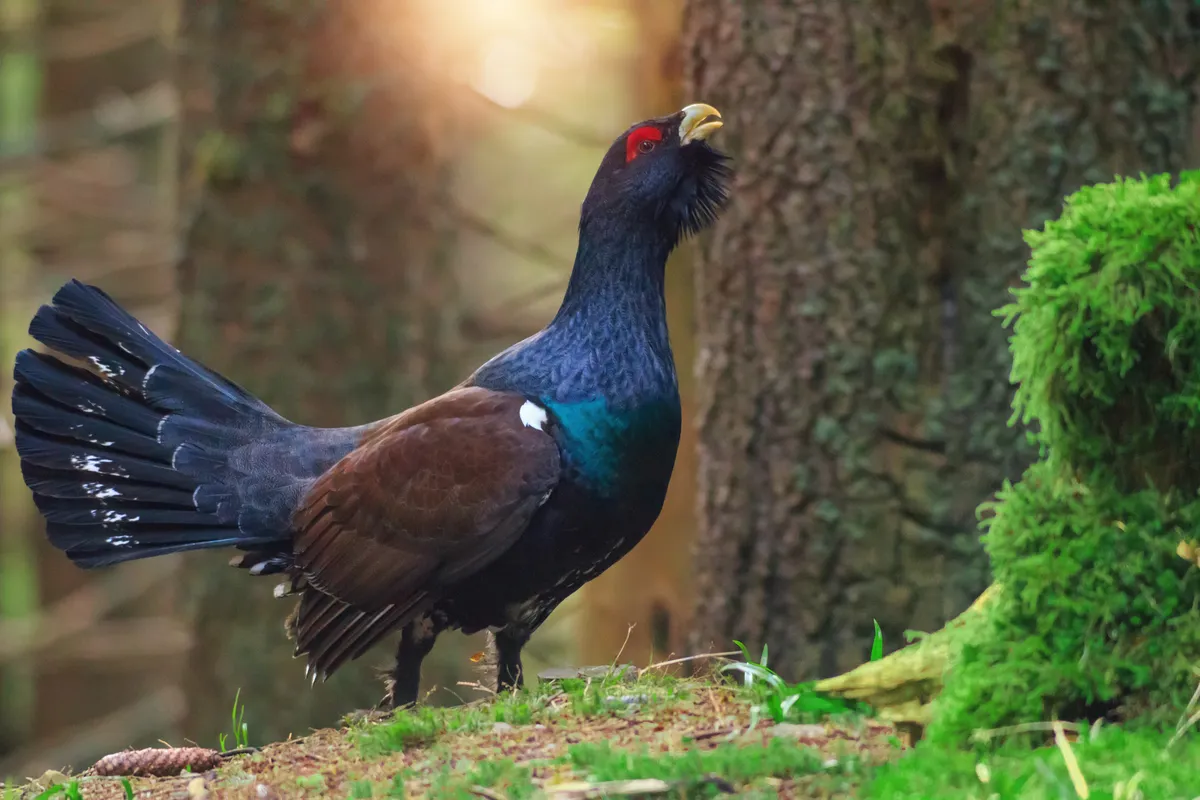1
Where are capercaillie found?

Also known as the western grouse, this large bird species is present through much of Europe and northern Asia. Their range has restricted over the last few centuries and is now extinct in Ireland and Belgium. In the UK they are only found in Scotland.
2
What is the preferred habitat of capercaillie?
The capercaillie is a non-migratory bird that prefers mature conifer forest with an open canopy. Loss of this habitat is having a large effect on their numbers.
3
How big to capercaillie grow?

Male and females differ greatly in size, in fact they have one of the largest sexual dimorphisms in the bird world. Males are usually between 75 and 85 cm in length, although one wild individual was measured at a meter long, and an average weight of 4.1 kg. Females are smaller at between 54 and 64 cm with an average weight of 1.8 kg. Another difference between male and female is the colour of their feathers.
4
What sound do capercaillie make?
Capercaillie make a number of different noises and their song changes during the mating season.
5
Why do capercaillie form leks?
A lek is a group of male animals that gather together to display, usually competing for females. Capercaillie form leks on the ground during the end of the breeding season when females arrive at the groups, ready for mating. It is the final stage of their elaborate courtship and competitive displays.
During this time males song is a series of clicks, that has been likened to a bouncing ping-pong ball, which is accompanies by raised head and feathers.
6
Why are capercaillie only found in Scotland in the UK?
The capercaillie became extinct throughout the UK in the 1700’s, with the main cause being loss of their woodland habitat.
A number of birds were then reintroduced from Sweden to Perthshire in 1837 and the population was able to grow again. In 1970 there were around 20,000 individuals, although numbers have been declining since then.
7
Are the capercaillie endangered?
On the IUCN red list the capercaillie are listed as least concern because their overall number across their entire range is not significantly decreasing. However, there have been local extinctions and in many areas the populations are definitely at risk.
In Scotland the birds are facing their second UK extinction due to habitat loss and increased predation from crows and foxes. Forest management is also a problem with birds dying due to flying into deer fences.